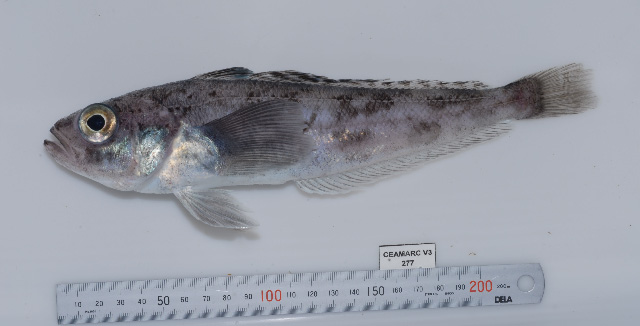| Nototheniidae (Cod icefishes), subfamily: Trematominae |
| 34.5 cm TL (male/unsexed) |
|
demersal; marine; depth range 70 - 650 m |
| Southern Ocean: continental shelf of Antarctica and nearby islands, including the South Orkney. |
|
Dorsal spines (total): 6-7; Dorsal soft rays (total): 36-38; Anal spines: 0-0; Anal soft rays: 34-36; Vertebrae: 54-57. Second dorsal-fin rays 0-3 more than anal-fin rays. Preopercular-mandibular canal with 10 pores; infraorbital canal with 6-8 pores; supra-orbital canal with 4 pores; coronal commissure with a single median pore; temporal canal with 5-6 pores; supratemporal canal complete wit 3 pores. Body and head almost entirely scaled, including snout, preorbitals, posterior part of maxilla, lower jaw, isthmus, branchiostegal membranes and proximal parts of branchiostegal rays.
Color: In alcohol, ground color buff, with a chequered pattern formed by staggered dark blotches along the dorsal, lateral and ventral parts of the body; ventral dark blotches may appear as short wavy horizontal dark marks. Snout, occipital region and sometimes interorbital area are dark. |
| Most common in shallower waters of the continental shelf, especially on banks less than 250 m deep in areas where local upwellings increase food supply (Ref. 6390). Juveniles are found near the surface, often in association with Antarctic krill (Euphausia superba) swarms. Feed on salps, nudibranchs, amphipods, copepods, polychaetes, krill, crustaceans, chaetognaths, and fish (Ref. 6390). |
|
Not Evaluated (N.E.) Ref. (130435)
|
| harmless |
Source and more info: www.fishbase.org. For personal, classroom, and other internal use only. Not for publication.

